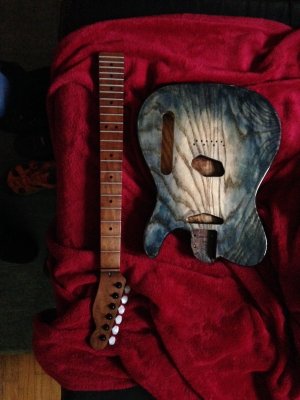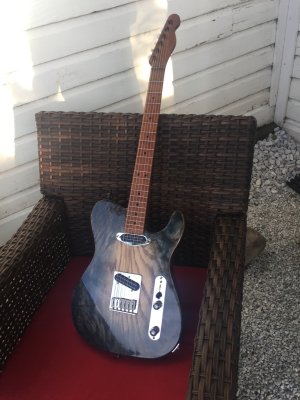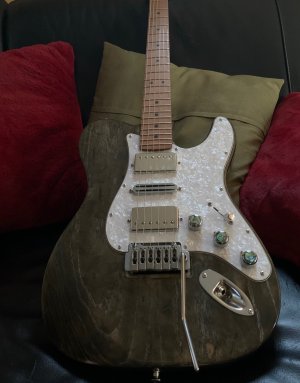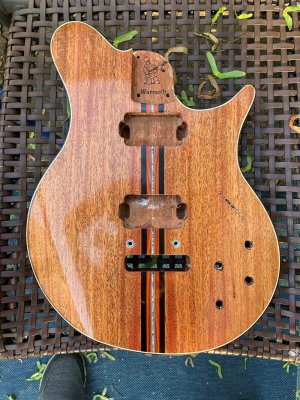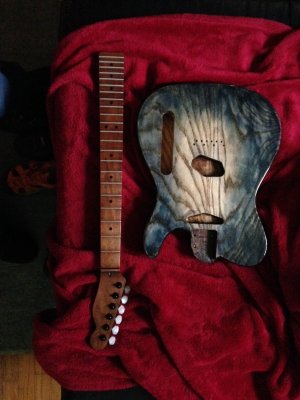Just like anyone getting ready to apply Birchwood Tru-Oil and Birchwood Casey Gun Stock Wax to my new Warmoth maple guitar neck I plunged into the internet to find informed ways to do it. (Yes I know it voids the warranty).
Literally every list of steps, every guide on how to apply these I have read or seen are different or contradict one another.
I understand the are different methods for different types of finishes and personal preferences. But some say this way of doing it will damage the neck, some say it won't. Some say this is the right way of doing it, some say that is wildly not how it's supposed to be applied bc how the products work.
These are some of the different options I've found online:
Use zippo lighter fluid at first to clean the fretboard, don't use zippo lighter fluid or naphtha that will damage the unfinished neck (that's what I have at hand, not naphtha), best to apply directly on the neck with fingers, apply using gloves, using fingers will damage it bc of finger oils, use thin coats, apply copiously, wait two to four hours to dry before the next coat, apply one coat after another after waiting four minutes,
Apply max 3 coats, apply 15 coats, sand between coatings, don't sand between coatings, use 0000 steel wool between coatings, don't use that bc damages the neck wet sand it instead, use 400 grit, use 2000 grit minimum, wait 24 hours from the last coat to apply Birchwood Wax, apply it immediately after the last coat for it to have effect.
But I'm guessing these products work a certain way and there are proper ways of applying it.
What I sense that it's happening here is that the are lots of people that really don't know how Birchwood Tru-Oil and Birchwood Casey Gun Stock Wax really works doing guides step by step on how to apply the finish.
I'm going for a fast neck, but based on a classic feel. If that makes sense. Satin finish. Feeling the wood but still be able to glide my hand fast would be nice.
Can a Luthier who does this for a living or someone with true hands on experience and knowledge about this oil and wax be so kind and give an informed way of steps to apply these to my maple neck thus clearing the inconsistencies about this subject made by people who don't know how these oil and wax actually work please?
Literally every list of steps, every guide on how to apply these I have read or seen are different or contradict one another.
I understand the are different methods for different types of finishes and personal preferences. But some say this way of doing it will damage the neck, some say it won't. Some say this is the right way of doing it, some say that is wildly not how it's supposed to be applied bc how the products work.
These are some of the different options I've found online:
Use zippo lighter fluid at first to clean the fretboard, don't use zippo lighter fluid or naphtha that will damage the unfinished neck (that's what I have at hand, not naphtha), best to apply directly on the neck with fingers, apply using gloves, using fingers will damage it bc of finger oils, use thin coats, apply copiously, wait two to four hours to dry before the next coat, apply one coat after another after waiting four minutes,
Apply max 3 coats, apply 15 coats, sand between coatings, don't sand between coatings, use 0000 steel wool between coatings, don't use that bc damages the neck wet sand it instead, use 400 grit, use 2000 grit minimum, wait 24 hours from the last coat to apply Birchwood Wax, apply it immediately after the last coat for it to have effect.
But I'm guessing these products work a certain way and there are proper ways of applying it.
What I sense that it's happening here is that the are lots of people that really don't know how Birchwood Tru-Oil and Birchwood Casey Gun Stock Wax really works doing guides step by step on how to apply the finish.
I'm going for a fast neck, but based on a classic feel. If that makes sense. Satin finish. Feeling the wood but still be able to glide my hand fast would be nice.
Can a Luthier who does this for a living or someone with true hands on experience and knowledge about this oil and wax be so kind and give an informed way of steps to apply these to my maple neck thus clearing the inconsistencies about this subject made by people who don't know how these oil and wax actually work please?



